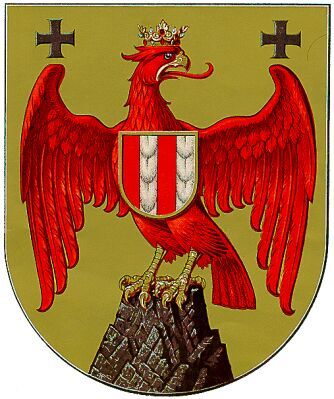Burgenland: Difference between revisions
Jump to navigation
Jump to search
Knorrepoes (talk | contribs) m (Text replace - "[[Literature" to "{{media}} [[Literature") |
Knorrepoes (talk | contribs) m (Text replace - "Austria - Österreichische Gemeindewappen" to "Austria - Österreichische Gemeindewappen") |
||
| Line 1: | Line 1: | ||
{|width="100%" style="color:black; background-color:#ffffcc;" | {|width="100%" style="color:black; background-color:#ffffcc;" | ||
|width="15%"|[[File:Austria.jpg|50 px|left]] | |width="15%"|[[File:Austria.jpg|50 px|left]] | ||
|width="70%" align="center" |'''Heraldry of the World<br>Civic heraldry of [[Austria]] - [[ | |width="70%" align="center" |'''Heraldry of the World<br>Civic heraldry of [[Austria]] - [[Österreichische Gemeindewappen]]''' | ||
|width="15%"|[[File:Austria.jpg|50 px|right]] | |width="15%"|[[File:Austria.jpg|50 px|right]] | ||
|} | |} | ||
Revision as of 06:47, 3 October 2014
| Heraldry of the World Civic heraldry of Austria - Österreichische Gemeindewappen |
BURGENLAND
Origin/meaning
The arms were officially granted in 1922.
Burgenland was created in 1918 from the German-speaking areas of former Hungarian territories. In 1919 it was transferred from Hungary to Austria.
The arms were created in 1922. The arms are a combination of the arms of the two most powerful families in the area in medieval times. The eagle with crosses is derived from the arms of the Counts of Mattersdorf-Forchtenstein, the breast shield from the arms of the Counts of Güssing-Bernstein.
Contact and Support
Partners:
Your logo here ?
Contact us
© since 1995, Heraldry of the World, Ralf Hartemink 
Index of the site
Literature : Gall, 1996











